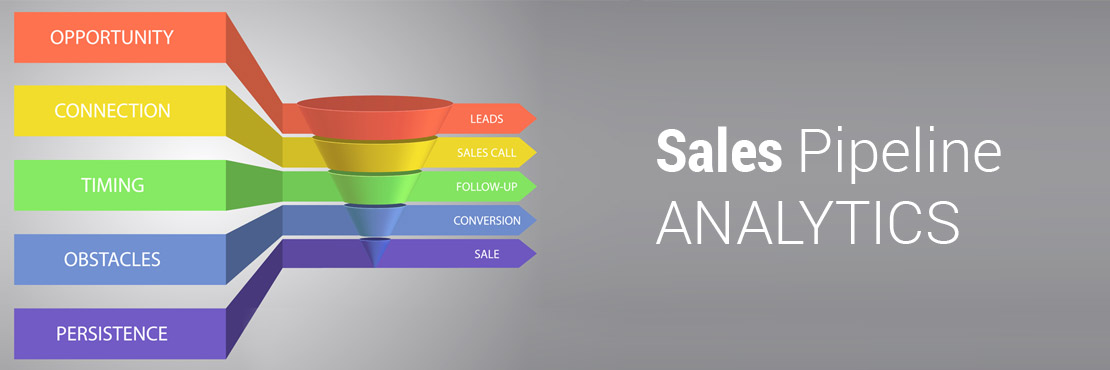Sales Pipeline Management-Maximizing Your Revenue Potential

You spend a great deal of energy, time, and resources on trying to build a healthy sales pipeline. A robust sales pipeline is a hard-won achievement, but, it can also be fragile. An otherwise healthy pipeline can be decimated by failure to effectively manage all of the components, processes, and interactions contained within that pipeline. Enterprises that attain high levels of sales pipeline management are able to maximize their revenue potentials.
The Sales Pipeline
A typical sales pipeline will consist of the following fundamental stages:
- Discovery – Initial creation of a sales lead
- Qualification – Qualification of the lead (buyer intent, product match, etc.)
- Negotiation – Pricing, product specs, contract terms, etc
- Close – Contract is signed or the deal is lost
- Revenue Recognition – The ultimate objective!
Your ability to get the reward of “revenue recognition” will be determined by how effectively you manage every stage of the pipeline lifecycle.
Sales Pipeline Management – Common Obstacles
Research and surveys have shown that there are a few common problems that can inhibit an enterprise’s ability to achieve high levels of sales pipeline management. Those common issues include….
- The use of siloed applications that prohibit a consolidated view of critical pipeline information
- Sub-par forecasting accuracy due to cumbersome—non-automated—forecast processes and validations
- Inability to make impactful pipeline adjustments due to lack of real-time insights into customer needs and trends
- Inefficient utilization of sales resources due to limited visibility into pipeline status and inability to detect “hot-spots” that need support
- Inability to provide customers with a seamless purchase experience that connects data across sales, marketing, and service channels
Overcoming Those Obstacles – Maximizing Your Pipeline
Few things are more demoralizing for a business than the loss of revenue that had been sitting within the sales pipeline. Revenue potential that was squandered due to one or more of the obstacles detailed above. How to avoid that? What are some of the common characteristic and capabilities of a highly functional sales pipeline management ecosystem?
Sales Pipeline Analytics – Get Intimate with Your Pipeline

Robust pipeline management requires an intimate relationship with the data contained within that pipeline. That relationship must go well beyond periodic reviews of static worksheets and reports. The relationship must be supported by living, breathing, sales pipeline analytics; analytics that provide:
- A comprehensive—real-time—view of pipeline data that can be accessed from anywhere, at any time
- Ability to fully customize pipeline dashboards tailored to the needs of the specific stakeholder
- User-friendly ability to slice and dice pipeline data to create concise customized reports
- Ability to run “what if” scenarios to assess impacts of potential forecast fluctuations
- Ability to quickly run historical analysis that enable insights into future trends and behaviors
- Custom alerts that trigger automated, proactive, actions
- Mobile ability to make live pipeline adjustments to improve data accuracy
- Analytics that can be integrated within a larger sales process and its supporting CRM
Sales Pipeline Management that Engages Your Customers
Does your sales pipeline management process provide value to your customers? Does it actively engage with those customers? If not, you run the risk of a diminished ability to maximize the revenue potential within your pipeline. Pipeline management that occurs in isolation from the customer is doomed to inefficiencies and dissatisfaction. A mutually-beneficial pipeline management process will include:
- Mobile-enabled ability for customers to participate in real-time pipeline reviews and validations
- Accumulation and analysis of historical data that empowers the customer to provide more accurate information
- Ability for customers to modify their forecasts—in real time—via user-friendly tools and applications
- The provision of a seamless data collection experience that gives the customer an ongoing stake in the process and confidence in its outcomes
Few initiatives have a better ROI potential than taking appropriate measures to improve sales pipeline management. Consider this: Let’s say you have a current pipeline potential of $1,000,000. If your average conversion rate is 15%, you will realize only $150,000 of that potential revenue. Improving that conversion rate to 25% will generate an additional $100,000 in revenue for your enterprise. A higher sales conversion, over time, will more than pay for your investments in pipeline management improvement.
Improving your sales pipeline management performance will take commitment, work, and investment. Harmonizing your pipeline analytics and maintenance capabilities with your efforts to engage your customers in the process will be critical factors in reaching your ultimate objective—-maximizing your revenue potential.













